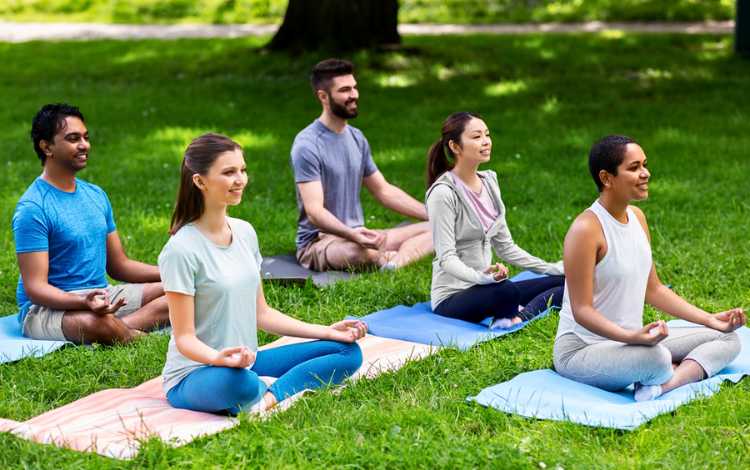
Meditation has become a popular way for many people to find peace in their busy lives. More and more of us are looking for ways to relax, stay calm, and be present.
Many places around the world offer meditation classes, but there’s something special about Bali. It is known for its beautiful nature and calming environment. It’s a place where many people go to learn about meditation and yoga.
Being in this tranquil place feels like taking a break from the noise and stress of everyday life. If you’re thinking about trying meditation or starting a class, knowing what to include is essential. This article will help you understand it.
Why Meditation Classes Are Important
Meditation, derived from the Latin term meaning ‘to ponder,’ is a technique fostering concentration, clarity, mood regulation, awareness, deeper understanding, and relaxation.
Various forms, including movement, transcendental, mantra, and mindful meditation, offer diverse approaches to the practice. Conducted anywhere and at any time, meditation classes, typically guided by qualified teachers, provide a supportive environment.
For newcomers, the initial perception of meditation classes as daunting or intimidating is alleviated by the presence of others and the expertise of the teacher, enhancing effectiveness compared to solo practice at home.
Whether sitting on the floor, a chair, or lying down on a mat, the flexibility in positioning allows people to choose what feels most comfortable and safe.
The class ambiance may include soft music, meditation bowls, or the teacher’s voice, offering various formats to suit individual preferences.
Why Time and Place Matter for Meditation Classes
The synergy of time and place holds profound importance in the teachings provided in meditation classes.
Choosing the right time, such as early mornings or evenings, sets the stage for a tranquil and focused mind, allowing participants to disconnect from daily stresses.
The harmonious convergence of the right time and place acts as a catalyst, fostering deep inner exploration and peace.
A. Why Time Matters
Why does timing matter for improved meditation? Firstly, it takes time for your mind to settle down. Secondly, going deeper into meditation vibrations is a gradual process. Thirdly, when initiating meditation, you’re forging new brain pathways involving your entire being over time.
Lastly, for a lifelong meditative journey, patience is crucial; quick results and meditation don’t align well. Rushing may lead to a temporary state akin to a nap.
Allow yourself the time to explore deeply and uncover profound discoveries in your meditation practice.
B. Why Places Matter
Choosing the right place for meditation holds significant importance, especially in the initial stages. The surroundings can greatly impact the meditation process. In noisy environments, it becomes challenging to start the practice, while quieter places facilitate a smoother beginning.
The rationale behind selecting a favorable place lies in calming the five senses and, subsequently, the mind.
Closing the eyes in a softly lit or dark environment, maintaining a clean mouth, sitting undisturbed, using fragrances, and focusing on specific sounds help quiet each sense. Also, initially, being near water bodies like rivers or oceans proved highly productive.
A great example that captures all the above can be found in the article about Ubud meditation classes. The area is located in the midst of the famous island, Bali; the town “Ubud” captivates many yoga enthusiasts and spiritual seekers with its cultural charm and serene landscapes.
It is surrounded by greenery and offers a unique blend of tradition, art, and peaceful retreats, making it a perfect place for meditation classes.
Core Elements to Include in Meditation Classes
Starting a meditation class can be a big step, but knowing what to include can make it easier.
Here’s a simple guide on what elements to add, making sure everyone, from those new to meditation to those who have been practicing for years, gets something out of it.
1. Beginner Techniques
- Breath Awareness: This is a simple way to start. Everyone focuses on their breathing. It helps to calm the mind and is often the first step for many people in meditation.
- Body Scanning: In this method, people think about each part of their body, one at a time, from their feet to their head. It helps to relax and be aware of how the body feels.
2. Intermediate Techniques
- Guided Visualizations: Here, a teacher talks and leads people to imagine peaceful and calm places. It helps to reduce stress and can be a good way to start meditating deeper.
- Mindfulness Meditation: This is about being in the present moment. People try to be aware of their thoughts and feelings without thinking if they are good or bad. It helps to understand the mind better.
3. Advanced Techniques
- Transcendental Meditation: In this method, people repeat a word or sound in their minds. It needs some training but can help to focus the mind and find deep peace.
- Zen Meditation: This is a kind of meditation where people sit in a certain way and focus on their breathing. Sometimes, they also think about a question or idea to help them meditate deeper.
Including these techniques in a meditation class can be helpful. Always remember meditation is a personal journey. The main goal is to find what works best for each person and help them along the way.
Image source – DepositPhotos

